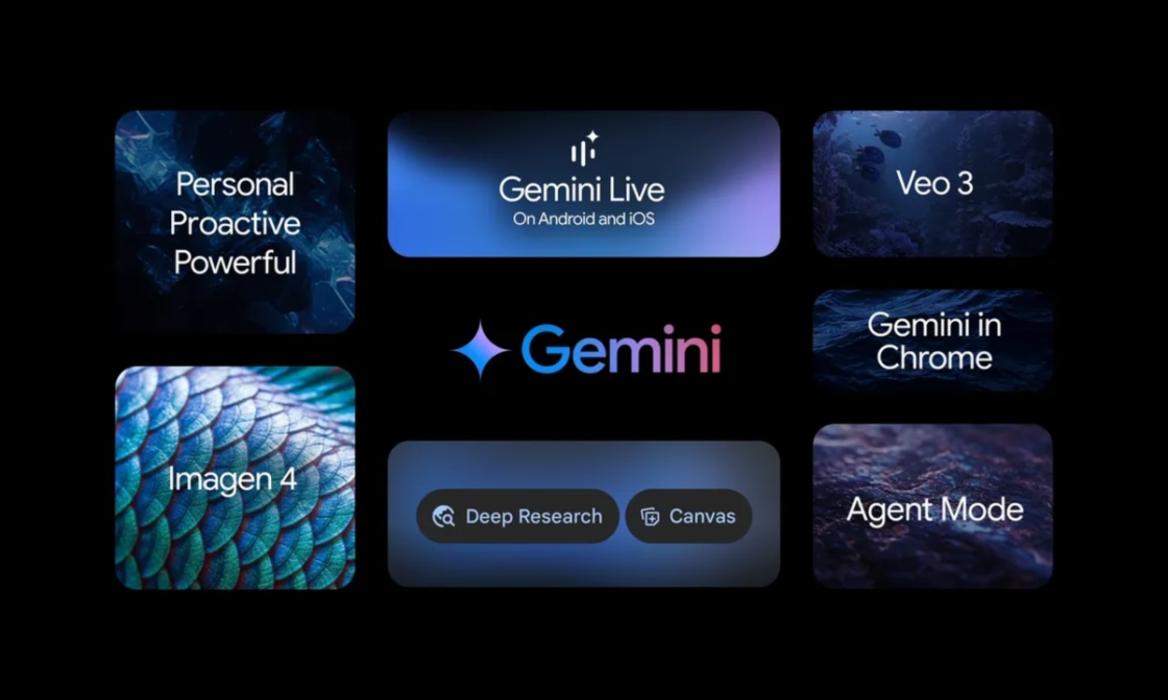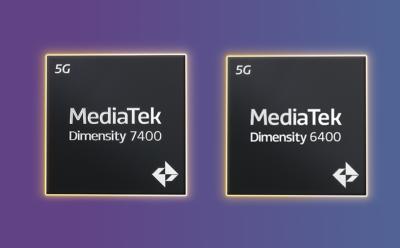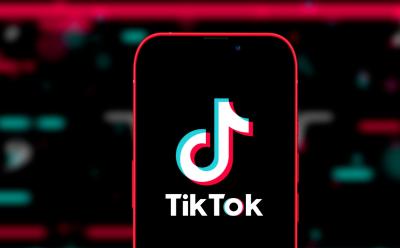Google unveiled a comprehensive expansion of Gemini at I/O 2025, introducing a more capable Agent mode that can browse the web and perform tasks, enhanced personalization through Gemini Live, and a suite of powerful models and tools designed to weave into daily workflows. The updates position Gemini as a more proactive, multi-app AI assistant that can operate across devices and surfaces, from mobile devices to desktop browsers. The event also showcased new pricing contours, broader availability, and student-oriented incentives, signaling Google’s intent to broaden Gemini’s reach while maintaining a tiered model for advanced capabilities.
Gemini Agent Mode: Web Browsing, Task Automation, and Practical Use
Gemini’s Agent mode represents a shift toward real-world, action-oriented AI assistance. The core capability is live web browsing that can carry out tasks on behalf of the user, rather than merely summarizing information. For example, if you’re searching for an apartment, the Agent mode can actively locate listings that match your criteria, compare options, and schedule property tours. This creates a streamlined end-to-end workflow where the AI not only finds information but also coordinates next steps, reducing back-and-forth and decision latency.
The mechanism behind this capability hinges on MCP, a framework Google uses to access web listings on supported sites. Through MCP, the Agent mode can retrieve current listings, filter them by your preferences, and present options in an organized, actionable way. It can then help you take concrete actions—such as initiating tour requests, saving notarized details, or sharing listings with trusted contacts—without you manually navigating multiple sites.
Pricing and availability play a crucial role in adoption. The Agent mode is initially available to users who subscribe to the Google AI Ultra plan, which is priced at $249.99 per month. At launch, this plan is US-only, reflecting a phased rollout strategy common in high-impact features. Google is also offering a substantial promotional incentive: new users can enjoy 50% off for the first three months. This pricing structure positions Agent mode as a premium, enterprise-grade feature set, while the promotional discount makes it more accessible during early adoption.
From a practical standpoint, the Agent mode unlocks a set of recurring use-cases that can transform daily routines. Real estate hunting, travel planning, and shopping where live information and scheduling are valuable stand out as prime scenarios. Beyond listings, the Agent mode can potentially handle other site interactions that support decision-making and action, such as price comparisons, availability checks, and appointment booking. The capability to act directly on web content means users can defer repetitive tasks to the AI, saving time and enabling more efficient decision loops.
Looking ahead, the Agent mode’s efficacy will depend on the breadth of supported websites, the robustness of its action-creation flow, and how well it handles dynamic web pages and consent prompts. As with any web-connected AI, privacy and security considerations will be central to user trust. The ability to perform actions on your behalf relies on secure, auditable interactions and clear user consent for every operation. In this phase of rollout, users will want to monitor the actions the Agent takes and adjust preferences to balance convenience with privacy.
Availability and early access dynamics are likely to evolve. The initial US-only window for Google AI Ultra subscribers creates a controlled environment for testing and optimization before widening access. As adoption scales, Google may expand MCP-supported websites, broaden the eligibility window, and refine the cost structure or incentives to make Agent mode appealing to a broader audience. In sum, Agent mode signals Google’s push to shift AI from passive insight generation to active task execution, a move that can redefine how people manage complex, multi-step processes in daily life.
Gemini Live: Personalization, Proactivity, and App Ecosystem
Gemini Live, now available to all users on Android and iOS, emphasizes personalization and proactive assistance. The user experience is designed to be more anticipatory, making it easier to integrate Gemini into everyday planning and decision-making. The essence of Gemini Live is to extend the AI’s reach beyond passive responses to active support that aligns with your routines and preferences.
A key dimension of Gemini Live is its enhanced capacity to interact with other Google apps and services. Users can create events directly in Google Calendar through Gemini Live, a straightforward yet powerful workflow that reduces steps between intention and action. The AI can pull the latest details from Google Maps, helping you plan routes, estimate travel times, and adjust plans in real time as conditions change. The integration doesn’t stop there; Google plans to weave Tasks, Keep, Calendar, and Maps more tightly into the Gemini Live experience, enabling a cohesive ecosystem where the AI orchestrates tasks across multiple apps.
Practical use cases illustrate the value of this deeper integration. A user planning a day can ask Gemini Live to assemble a schedule from calendar events, map out a route that minimizes transit time, update tasks based on new information, and remind you of important milestones as the day unfolds. The personalization aspect means Gemini Live can tailor recommendations and reminders to your preferences, such as preferred travel times, locations, or calendar priorities. The result is a more seamless collaboration between user intent and AI execution, with less toggling between apps and fewer manual steps.
From a usability perspective, Gemini Live’s expanded app integrations help reduce cognitive load and support more natural interactions. Rather than requesting data from separate services and then manually synthesizing it, users can engage in a fluent conversational workflow that feels like working with a proactive assistant. This approach aligns with broader AI trends that prioritize context awareness, predictive planning, and frictionless task fulfillment.
As the feature matures, expectations center on how well Gemini Live can maintain privacy boundaries while delivering convenient, cross-app experiences. The balance between proactive assistance and user control will shape adoption, especially for users with sensitive calendars or personal data. The ongoing expansion into core Google apps suggests a strategy of building a centralized AI assistant that can navigate a user’s digital ecosystem with increasingly nuanced understanding of preferences and routines.
Imagen 4 and Veo 3: Advanced Image, Video, and Audio Capabilities
Google’s latest image generation model, Imagen 4, and the video generation model, Veo 3, are now integrated into the Gemini app, expanding the creative and media-rich potential of the platform. Imagen 4 broadens the scope of image synthesis, enabling higher-quality visuals, more accurate style replication, and improved alignment with user prompts. Veo 3 complements this by generating video content that can be used for prototypes, demonstrations, or creative storytelling, expanding Gemini’s utility beyond text-based outputs.
A standout feature of Veo 3 is its ability to generate audio as a native component of videos. The model can produce sound effects, background ambiance, and dialogue between characters, enabling more immersive media output directly from the AI. This integrated audio capability can streamline content creation workflows, making it possible to produce end-to-end multimedia assets without leaving the Gemini environment. At launch, Veo 3 is available in the US specifically for Google AI Ultra subscribers, reflecting the tiered access approach for advanced media tools.
The combination of Imagen 4 and Veo 3 enriches the Gemini ecosystem in several ways. First, users can generate concept art and visual references to accompany projects, marketing collateral, or educational materials. Second, the ability to produce video with synchronized audio opens doors for rapid prototyping, demonstrations, and tutorials. Third, the integrated generation workflow can accelerate experimentation, helping creators iterate on visuals and audio in a single interface.
From a technical standpoint, these capabilities underscore a broader trend toward multimodal AI that blends image, video, and audio generation with text-based interactions. As with other features, the quality, reliability, and user experience will hinge on model robustness, latency, and how well prompts translate into usable outputs. Users should also consider licensing, reuse rights, and content safety when deploying AI-generated media in public or commercial contexts.
Availability notes emphasize that Veo 3’s audio-creation capabilities are currently tied to the same US-based Google AI Ultra subscription tier, highlighting the staggered access pattern that Google has adopted for its most advanced media tools. As deployment expands, users outside the initial geographies or plan tiers may gain exposure to these capabilities, albeit on different timelines or pricing terms. Overall, Imagen 4 and Veo 3 position Gemini as a more versatile media assistant, capable of producing high-quality visuals and multimedia content directly within the app.
Gemini 2.5 Flash: A More Efficient Default with Competitive Performance
Google describes the new Gemini 2.5 Flash model as the default option within the Gemini app, signaling a shift toward a smaller and more affordable on-device or cloud-optimized model without sacrificing near-flagship performance. The designation of Flash as the default suggests a balance between speed, resource efficiency, and output quality that aims to meet everyday user needs while preserving the capacity to scale to heavier tasks.
Despite its smaller footprint, 2.5 Flash is positioned to come within striking distance of the flagship Gemini 2.5 Pro model. This implies notable efficiency gains—such as faster response times, reduced power consumption, and lower bandwidth requirements—while still delivering robust capabilities for typical AI tasks, information retrieval, and routine planning. For users, this can translate into more responsive interactions, lower operational costs, and a smoother experience on devices with varying performance profiles.
The shift to a new default model has several practical implications. It can widen accessibility for a broader audience, including devices with limited processing power or constrained network conditions. It also influences how developers design workflows, as the increased efficiency may enable more complex prompts and richer interactions within a more responsive interface. As with any model transition, there will be considerations around feature parity, prompt behavior, and fine-tuning to ensure a consistent user experience across tasks.
In sum, Gemini 2.5 Flash embodies a core product strategy: delivering a balance of performance, cost, and accessibility. By offering a powerful, cost-conscious default, Google can help more users benefit from advanced AI capabilities in everyday contexts, while still reserving higher-tier capabilities for subscribers who opt into Pro or Ultra tiers. The practical takeaway is that users can expect a more streamlined, faster, and economical Gemini experience without sacrificing the depth of functionality they rely on for complex tasks.
Deep Research AI: File Uploads for Deeper Insights
A notable enhancement in Gemini’s toolkit is the ability to upload files, images, and PDFs while using the Deep Research AI agent to generate deeper insights. This capability expands the AI’s analytical reach beyond conversational prompts to structured analysis of user-provided materials. By ingesting documents, graphs, diagrams, and visuals, the AI can extract key findings, synthesize information across sources, and produce more nuanced conclusions that support decision-making.
The workflow typically involves selecting or dropping relevant files into the Gemini interface and invoking the Deep Research AI agent to process the content. The agent can summarize sections, identify trends, compare data points, and highlight implications relevant to a user’s goals. For researchers, students, or professionals, this capability can streamline literature reviews, project briefings, or competitive analyses by consolidating disparate sources into a coherent, actionable narrative.
Security and privacy considerations are central to file-based AI analyses. Users should be mindful of sensitive information contained in documents and take advantage of any in-platform protections, such as access controls and data handling policies, to ensure that confidential material remains secure. Clear prompts and scope definitions help the AI focus on the intended tasks, reducing the risk of inadvertently exposing sensitive content through broader, less targeted analyses.
The Deep Research AI workflow also complements other Gemini capabilities. For instance, the AI can correlate insights drawn from uploaded materials with live data pulled from the web via Agent mode or integrated maps and calendars through Gemini Live. This cross-modal capability can yield richer, context-aware recommendations that leverage both user-provided material and real-time information. As with all AI-assisted analyses, users should validate results with their own judgment, particularly when outputs could influence important decisions.
Desktop Chrome Integration: Gemini Within Your Browser
Gemini’s integration into the desktop Chrome browser on Windows and macOS broadens access and streamlines user workflows. Google indicates that subscribers of Google AI Pro and Google AI Ultra in the US can find the Gemini icon in the Chrome title bar, enabling quick access to Gemini from any website. This desktop integration means you can open Gemini directly on the page you’re viewing, ask questions about the current webpage, or request a summary of its content without leaving the tab you’re in.
The experience is designed to feel seamless: launch Gemini from the browser, query on-page content, and obtain contextual responses that reference the current URL. The ability to summarize a page or answer questions about a site’s content can significantly cut down the time needed for research, product comparisons, or content analysis. In practice, this means fewer manual page-by-page interactions and more iterative, context-driven exploration with an AI assistant that understands the context of your browsing session.
Looking ahead, Google envisions Gemini evolving to work across multiple tabs and to navigate websites on your behalf. This future capability would enable the AI to manage tasks across several opened pages, extract relevant information from diverse sources, and perform coordinated actions that span multiple websites. Such a development would dramatically increase the potential for automation and cross-site workflows, though it would also heighten the importance of robust privacy safeguards, clear user authorization, and precise control over AI behavior in a browser environment.
The Chrome integration complements the mobile and app-based Gemini experiences by offering a consistent AI-enabled browsing assistant across devices. For users who perform extensive web research, shopping, or content curation, this integration creates a unified interface where Gemini can assist in real time, differentiate between sources, and present synthesized insights directly within the browsing context. As with other features, the rollout remains contingent on regional availability and plan tier, reinforcing Google’s tiered access strategy.
Student Offer: Free Google AI Pro Upgrade for One Year
In a notable move to broaden access, Google announced a free upgrade to the Google AI Pro plan for a full year for college students in the United States and several other countries, including Brazil, Indonesia, Japan, and the United Kingdom. This initiative targets learners who can benefit most from elevated AI capabilities, enabling them to experiment with advanced tools such as Agent mode, Gemini Live, Imagen 4, Veo 3, and Deep Research AI in an academic context.
The student upgrade can act as a catalyst for adoption, enabling students to integrate Gemini into coursework, research projects, and collaborative assignments. It may also encourage universities and educators to incorporate Gemini’s capabilities into curricula, projects, and digital workflows. The broader implication is that a younger, technically savvy user base could help drive long-term familiarity with Gemini’s platform, contributing to network effects as students transition into professional roles.
Eligibility considerations typically include student status and verification, along with regional availability. While the rollout targets several key markets, updates may expand eligibility over time as the program scales. For students, this opportunity provides hands-on experience with cutting-edge AI tools, potential productivity gains, and a chance to experiment with real-world workflows that blend web browsing, document analysis, and multimedia generation in educational settings.
Practical Implications for Users and Organizations
The spectrum of Gemini’s enhancements—from Agent mode and Gemini Live to Imagen 4, Veo 3, and desktop Chrome integration—points to a broader strategy: embedding AI deeply into daily work and personal routines. This approach weaves together web-based automation, calendar and task orchestration, multimedia content creation, and seamless browser-level assistance into a cohesive AI-enabled workflow. Users can expect to perform more complex tasks with fewer steps, customize AI behavior to fit their routines, and leverage a richer multimedia toolkit to communicate, teach, or present ideas.
From an organizational perspective, these features open opportunities for new AI-assisted processes. Teams could use Agent mode for competitive research, partner outreach, or market scouting with scheduled follow-ups, while Live could help coordinate across team calendars and project milestones. Multimedia capabilities with Imagen 4 and Veo 3 could support marketing, training, or product demos with generated visuals, videos, and audio. The Chrome integration adds a persistent AI copilotics layer to web work, potentially accelerating research, procurement, and customer engagement tasks performed within the browser.
As adoption scales, users should remain mindful of privacy, data handling, and security considerations. Some capabilities rely on access to personal data, calendars, maps, or uploaded documents. It’s important to review permissions, understand how data is stored and processed, and adjust settings to align with comfort levels and organizational policies. The tiered access and regional rollout imply that not all features will be available to every user immediately, so planning for phased adoption and training can help maximize the benefits.
Conclusion
The I/O 2025 unveiling positions Gemini as a more integrated, action-oriented AI assistant that moves beyond advice and into execution. Agent mode offers live web browsing and task automation, while Gemini Live enhances personalization and cross-app orchestration on Android and iOS. The inclusion of Imagen 4 and Veo 3 expands creative capabilities to image, video, and audio generation, enriching multimedia workflows. A lighter, efficient default model with Gemini 2.5 Flash together with a Deep Research AI that can analyze uploaded files adds depth and speed to everyday tasks. Desktop Chrome integration provides browser-based AI support across a broad surface area, and a one-year free upgrade to Google AI Pro for students broadens access to advanced features in educational settings.
Taken together, these updates underscore Google’s aim to create a more proactive, capable, and accessible Gemini ecosystem. Whether you’re researching, planning, creating content, or coordinating across apps, Gemini’s expanded toolset is designed to streamline work, amplify productivity, and empower users to do more with intelligent assistance. As rollout continues, users can expect further refinements, broader availability, and increasingly integrated capabilities that bind the Gemini experience across devices and workflows.



